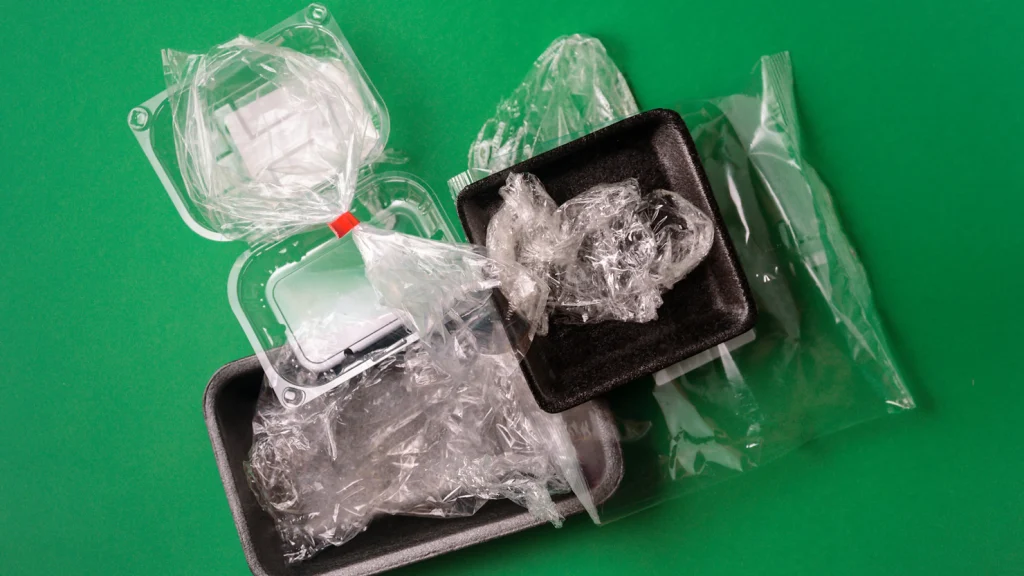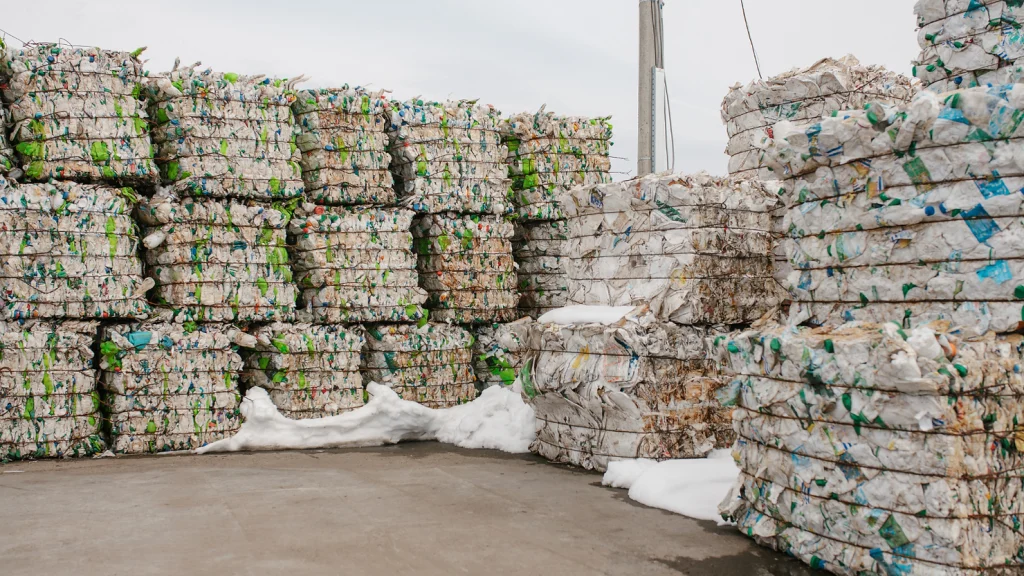Did you know that 29,000 metric tons of plastic are discarded each year? On top of that, it’s difficult for manufacturers to measure and reduce waste in support of their sustainability targets.

What’s Packaging Waste?
The packaging footprint refers to the environmental impact of the packaging materials and processes used to create and distribute a product. It encompasses various aspects, including the resources consumed, energy used, and emissions generated during the production, transportation, and disposal of packaging materials. The packaging footprint is a key consideration in sustainability efforts and is important for several reasons.
1) Environmental Impact
In 2019, there were nearly 6.2 million tonnes of plastic in products produced for Canadian consumption and nearly 2.3 million of those tonnes were in packaging. Packaging materials often come from finite resources, such as trees for paper or fossil fuels for plastics. The extraction, manufacturing, and disposal of these materials can contribute to habitat destruction, greenhouse gas emissions, and further pollution.
2) Waste Reduction
Excess or non-recyclable packaging can result in increased waste generation. Reducing unnecessary packaging or using materials that are easily recyclable or biodegradable can help reduce the waste sent to landfills.
3) Consumer Preferences
Many consumers are becoming more environmentally conscious and prefer products with minimal and sustainable packaging. A positive packaging footprint can enhance a brand’s reputation and attract eco-conscious customers. In a 2020 McKinsey US consumer sentiment survey, more than 60% of respondents said they’d pay more for a product with sustainable packaging.
4) Regulatory Compliance
Environmental regulations and standards are evolving to address packaging waste and emissions. Businesses that take steps to reduce their packaging footprint are more likely to comply with these regulations and avoid potential fines or penalties.
Who is Responsible for Packaging Waste?
The responsibility for producing packaging waste primarily rests with producers and manufacturers of products. These businesses make critical decisions regarding the type, amount, and design of packaging used for their goods. Their choices in packaging materials, size, and appearance directly influence the amount of packaging waste generated. Additionally, packaging designers, supply chain teams, marketing departments, and corporate leadership all play roles in shaping packaging decisions.

How Packaging Waste Can Be Reduced
In many regions, extended producer responsibility (EPR) programs and regulations compel manufacturers to take direct responsibility for managing their packaging waste. By adopting sustainable packaging practices and materials, businesses can reduce their environmental impact, meet regulatory requirements, and appeal to consumers increasingly concerned about sustainability and packaging waste.
“It is difficult to make informed decisions without clear data as most of the environmental impact occurs upstream during plastic production and downstream during disposal,” says The Owls CEO Hugo Fuentes.
Reducing packaging waste has become a major priority across a variety of industries such as food, restaurants, personal care products, and retailers. The United Nations is working on a legally binding agreement to eliminate plastic waste completely by 2024, which means participating countries could start seeing laws implemented around stricter plastic waste.
So, if you’re looking to add sustainable practices to your supply chain, packaging might be a good place to start. The Owl is currently running a pilot program with other industry leaders such as Jamieson Wellness, to help manufacturing companies reduce their packaging waste.
To learn more about the program, click the link below.
